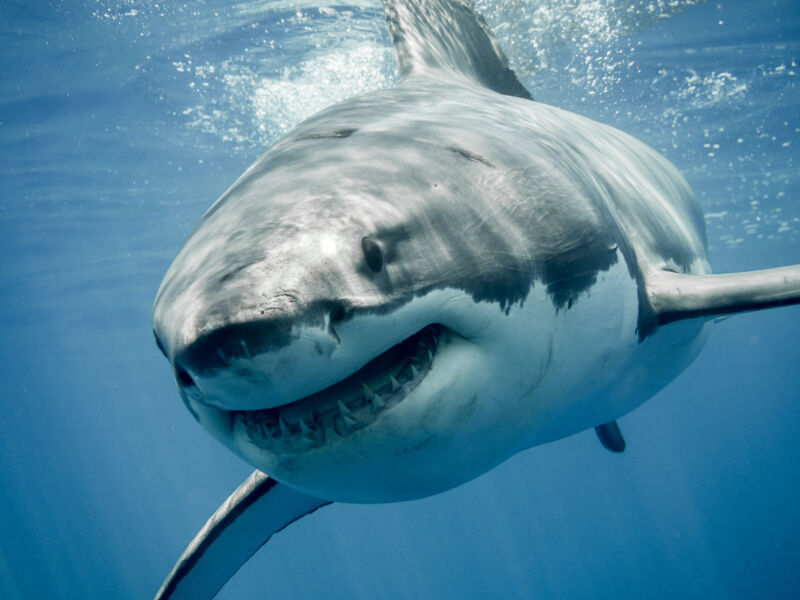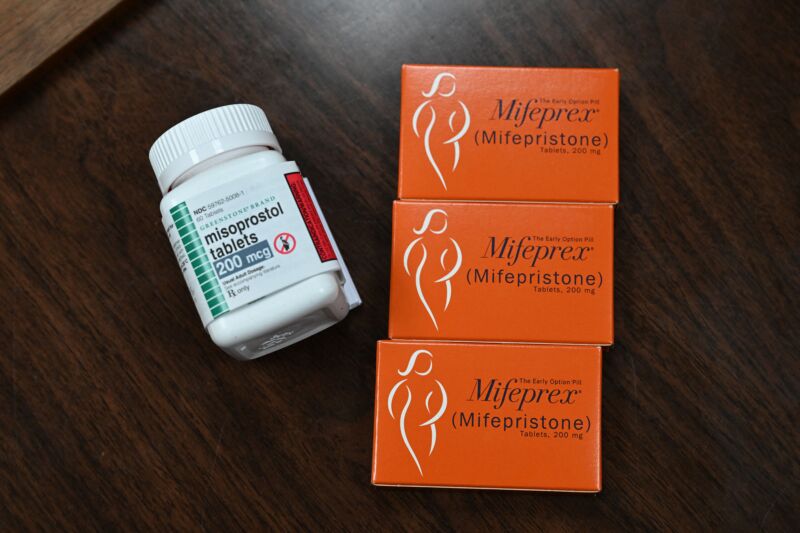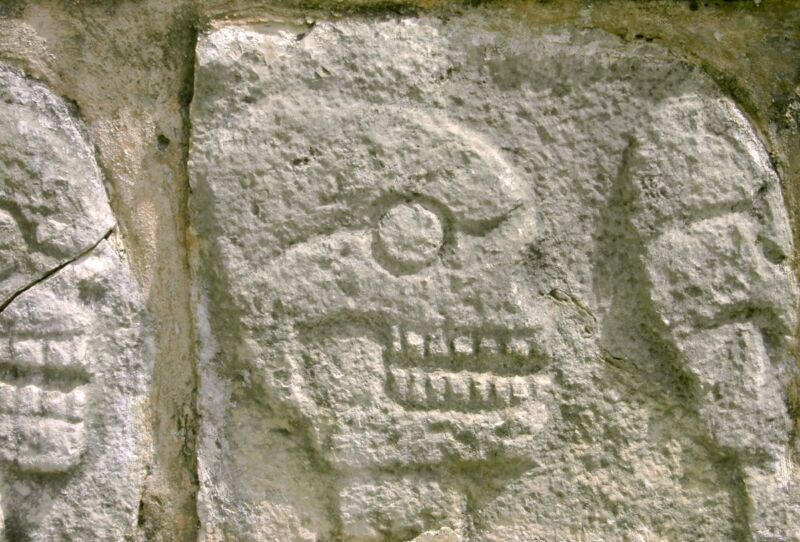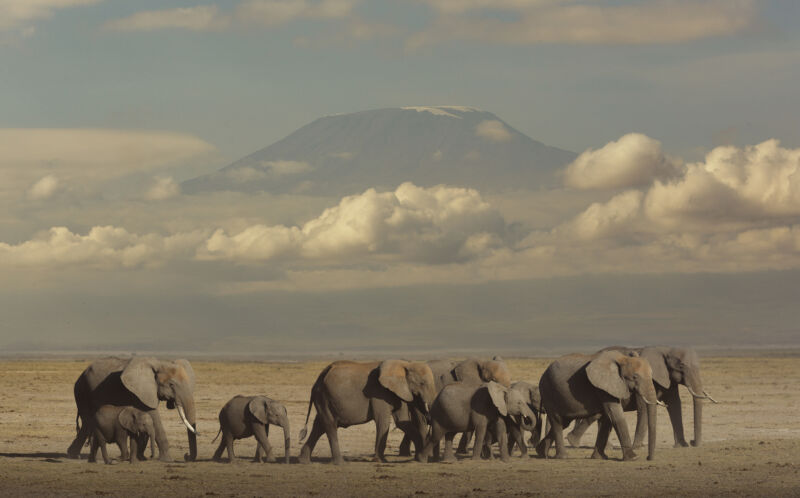A Tale of Two Nearly Extinct Giant Salamanders

© Chang W. Lee/The New York Times

© Chang W. Lee/The New York Times
The science of epigenetics suggests we can pass on trauma – but trust and compassion too
Since the sequencing of the human genome in 2003, genetics has become one of the key frameworks for how we all think about ourselves. From fretting about our health to debating how schools can accommodate non-neurotypical pupils, we reach for the idea that genes deliver answers to intimate questions about people’s outcomes and identities.
Recent research backs this up, showing that complex traits such as temperament, longevity, resilience to mental ill-health and even ideological leanings are all, to some extent, “hardwired”. Environment matters too for these qualities, of course. Our education and life experiences interact with genetic factors to create a fantastically complex matrix of influence.
Continue reading...© Illustration: Elia Barbieri/The Guardian
© Illustration: Elia Barbieri/The Guardian

© Alex Wroblewski for The New York Times

© Guadalupe Pardo/Associated Press

© Susan Walsh/Associated Press


Enlarge / Map from drone mission search for the Encephalartos Woodii in the Ngoye Forest in South Africa. (credit: CC BY-NC)
“Surely this is the most solitary organism in the world,” wrote paleontologist Richard Fortey in his book about the evolution of life.
He was talking about Encephalartos woodii (E. woodii), a plant from South Africa. E. woodii is a member of the cycad family, heavy plants with thick trunks and large stiff leaves that form a majestic crown. These resilient survivors have outlasted dinosaurs and multiple mass extinctions. Once widespread, they are today one of the most threatened species on the planet.
The only known wild E. Woodii was discovered in 1895 by the botanist John Medley Wood while he was on a botanical expedition in the Ngoye Forest in South Africa. He searched the vicinity for others, but none could be found. Over the next couple of decades, botanists removed stems and offshoots and cultivated them in gardens.
The long-running series in which readers answer other readers’ questions on subjects ranging from trivial flights of fancy to profound scientific and philosophical concepts
Why is it easier for me to remember that I’ve forgotten something than to remember the thing I’ve forgotten? John Gray, York
Post your answers (and new questions) below or send them to nq@theguardian.com. A selection will be published next Sunday.
Continue reading...© Photograph: Deepak Sethi/Getty Images
© Photograph: Deepak Sethi/Getty Images
Researchers say transcranial direct-current stimulation can reduce ‘love trauma syndrome’
Breaking up, as the Neil Sedaka hit goes, is hard to do. The emotional pain of a romantic split can be so severe it has its own clinical name – love trauma syndrome, or LTS.
But help could be at hand for those seeking to mend a broken heart. Research shows wearing a £400 headset for just a few minutes a day may ease the misery, negativity and depression that can accompany a failed relationship.
Continue reading...© Photograph: Tetra Images, LLC/Alamy
© Photograph: Tetra Images, LLC/Alamy

A range of scientific studies point to clear physical and mental benefits of supporting friends and family. And the deeper the engagement, the greater the feelgood factor
Like many people, I find that stress transforms me into a nasty combination of Oscar the Grouch and Scrooge McDuck. The more pressure I am under, the more irritable I feel – and the less generous I become. I partly blame our culture. I’ve read enough wellness advice to know that I need to prioritise my own needs over other people’s. And so, when I feel under pressure, I have often made it a habit to practise small indulgences aimed at restoring my mental equilibrium, while insulating myself from all but the most essential social commitments.
Having read the latest psychological research, I can’t help but wonder if this attitude only exacerbates my bad mood. A wealth of new studies has shown that being kind to others is often the most effective means of suppressing the physiological and psychological stress response. Whether we are giving our time to a charity, “paying it forward” in a coffee shop, or providing emotional succour to a friend in need, altruism can boost our wellbeing in ways that we simply do not experience from treating ourselves. Other-care, it seems, is often one of the best forms of self-care.
Continue reading...© Photograph: nicoletaionescu/Getty Images
© Photograph: nicoletaionescu/Getty Images
The latest play from the writing duo focuses on the landmark 1997 climate conference in Kyoto, Japan. During rehearsals, they talk about the importance of consensus, and the challenges of turning negotiations into drama
The rehearsal room in London’s Bethnal Green has a concentrated, businesslike and anticipatory atmosphere. It is filled with people sitting at tables with microphones in front of them, as though a conference were about to begin, which, in a sense, it is. On the stage’s periphery are directors Stephen Daldry and Justin Martin and the playwrights Joe Robertson and Joe Murphy, co-founders of the Good Chance company, and I can see, even from a distance, how purposeful they all are. This is the same team that was responsible for The Jungle, the internationally celebrated show about the theatre the two Joes set up in Calais’s refugee camp. Now, they are halfway through rehearsals of a fascinating, meticulously researched and high-risk new project, Kyoto, about the UN’s climate conference of 1997.
The conference’s stated aim was to cut global greenhouse gases by 5% by 2012 and was the first building block in the introduction of climate legislation across the world, starting the process that led to the adoption of the Paris agreement in 2015, which included emissions pledges for all. The Kyoto protocol was signed, against seemingly impossible odds, by 84 countries and more than 100 more have since joined. Its effectiveness has been limited - the developed nations all met their targets (some with some judicious offsetting with other countries’ reductions), but global emissions have since soared. However, as the first summit at which the world’s nations started to come together, it has become an historic environmental landmark.
Continue reading...© Photograph: Karen Robinson/The Observer
© Photograph: Karen Robinson/The Observer
Subatomic instrument will be able to accurately pinpoint locations under ground and under water, where satellite signals are often blocked
Dr Joseph Cotter takes some unusual pieces of luggage on his trips on the London underground. They include a stainless steel vacuum chamber, a few billion atoms of rubidium and an array of lasers that are used to cool his equipment to a temperature just above absolute zero.
While not the average kit you would expect to find being dragged into carriages on the District Line, this is the gear that Cotter – who works at Imperial College London’s Centre for Cold Matter – uses on his underground travels.
Continue reading...© Photograph: Thomas Angus
© Photograph: Thomas Angus

Enlarge (credit: RamonCarretero/Getty)
A hammerhead shark less than one meter long swims frantically in a plastic container aboard a boat in the Sanquianga National Natural Park, off Colombia’s Pacific coast. It is a delicate female Sphyrna corona, the world’s smallest hammerhead species, and goes by the local name cornuda amarilla—yellow hammerhead—because of the color of its fins and the edges of its splendid curved head, which is full of sensors to perceive the movement of its prey.
Marine biologist Diego Cardeñosa of Florida International University, along with local fishermen, has just captured the shark and implanted it with an acoustic marker before quickly returning it to the murky waters. A series of receivers will help to track its movements for a year, to map the coordinates of its habitat—valuable information for its protection.
That hammerhead is far from the only shark species that keeps the Colombian biologist busy. Cardeñosa’s mission is to build scientific knowledge to support shark conservation, either by locating the areas where the creatures live or by identifying, with genetic tests, the species that are traded in the world’s main shark markets.

The hydra is a Lovecraftian-looking microorganism with a mouth surrounded by tentacles on one end, an elongated body, and a foot on the other end. It has no brain or centralized nervous system. Despite the lack of either of those things, it can still feel hunger and fullness. How can these creatures know when they are hungry and realize when they have had enough?
While they lack brains, hydra do have a nervous system. Researchers from Kiel University in Germany found they have an endodermal (in the digestive tract) and ectodermal (in the outermost layer of the animal) neuronal population, both of which help them react to food stimuli. Ectodermal neurons control physiological functions such as moving toward food, while endodermal neurons are associated with feeding behavior such as opening the mouth—which also vomits out anything indigestible.
Even such a limited nervous system is capable of some surprisingly complex functions. Hydras might even give us some insights into how appetite evolved and what the early evolutionary stages of a central nervous system were like.
The discovery of water on Enceladus excited the scientific world – now, by 2040 a robot probe will investigate if we are alone in the universe
It is a tiny world, a mere 310 miles in diameter, and was considered until recently to be one of the least interesting moons in the solar system. But Enceladus, one of 146 moons that orbit Saturn, has become a hot astronomical attraction – scientists have discovered that it offers one of the best prospects of finding life on another world in our solar system.
The European Space Agency (Esa) has announced it has begun planning a mission to take a robot probe across a billion miles of space to investigate.
Continue reading...© Photograph: NASA/JPL-Caltech/Space Science Institute/Cornell University
© Photograph: NASA/JPL-Caltech/Space Science Institute/Cornell University

© Eric Fowke/Alamy

Enlarge / Blue Origin's New Glenn rocket on the launch pad for testing earlier this year. (credit: Blue Origin)
After years of lobbying, protests, and bidding, Jeff Bezos's space company is now a military launch contractor.
The US Space Force announced Thursday that Blue Origin will compete with United Launch Alliance and SpaceX for at least 30 military launch contracts over the next five years. These launch contracts have a combined value of up to $5.6 billion.
This is the first of two major contract decisions the Space Force will make this year as the military seeks to foster more competition among its roster of launch providers and reduce its reliance on just one or two companies.

Enlarge / Ten milligram tablets of the hyperactivity drug, Adderall, made by Shire Plc, is shown in a Cambridge, Massachusetts pharmacy Thursday, January 19, 2006. (credit: Getty | Jb Reed)
The Centers for Disease Control and Prevention on Thursday warned that a federal indictment of an allegedly fraudulent telehealth company may lead to a massive, nationwide disruption in access to ADHD medications—namely Adderall, but also other stimulants—and could possibly increase the risk of injuries and overdoses.
"A disruption involving this large telehealth company could impact as many as 30,000 to 50,000 patients ages 18 years and older across all 50 US states," the CDC wrote in its health alert.
The CDC warning came on the heels of an announcement from the Justice Department Thursday that federal agents had arrested two people in connection with an alleged scheme to illegally distribute Adderall and other stimulants through a subscription-based online telehealth company called Done Global. The company's CEO and founder, Ruthia He, was arrested in Los Angeles, and its clinical president, David Brody, was arrested in San Rafael, California.

Enlarge / This is an intact phage. A tailocin looks like one of these with its head cut off. (credit: iLexx)
Long before humans became interested in killing bacteria, viruses were on the job. Viruses that attack bacteria, termed "phages" (short for bacteriophage), were first identified by their ability to create bare patches on the surface of culture plates that were otherwise covered by a lawn of bacteria. After playing critical roles in the early development of molecular biology, a number of phages have been developed as potential therapies to be used when antibiotic resistance limits the effectiveness of traditional medicines.
But we're relative latecomers in terms of turning phages into tools. Researchers have described a number of cases where bacteria have maintained pieces of disabled viruses in their genomes and converted them into weapons that can be used to kill other bacteria that might otherwise compete for resources. I only just became aware of that weaponization, thanks to a new study showing that this process has helped maintain diverse bacterial populations for centuries.
The new work started when researchers were studying the population of bacteria associated with a plant growing wild in Germany. The population included diverse members of the genus Pseudomonas, which can include plant pathogens. Normally, when bacteria infect a new victim, a single strain expands dramatically as it successfully exploits its host. In this case, though, the Pseudomonas population contained a variety of different strains that appeared to maintain a stable competition.

Enlarge / US Embassy Australia employees learning to do the Nutbush to honor the late Tina Turner in 2023. (credit: Screenshot/US Embassy Australia on X)
The whole world mourned the passing of music legend Tina Turner last year, perhaps none more so than Australians, who have always had a special fondness for her. That's not just because of her star turn as Aunty Entity in 1985's Mad Max Beyond Thunderdome or her stint as the face of Australia's rugby league.
Australians of all ages have also been performing a line dance called the "Nutbush" at weddings and social events to Turner's hit single (with then-husband Ike Turner) "Nutbush City Limits." Turner herself never performed the dance, but when she died, there was a flood of viral TikTok videos of people performing the Nutbush in her honor—including members of the US Embassy in Canberra, who had clearly just learned it for the occasion. Dancers at the 2023 Mundi Mundi Bash in a remote corner of New South Wales set a world record with 6,594 dancers performing the Nutbush at the same time.
The exact origin of the dance remains unknown, but researchers at the University of South Australia think they understand how the Nutbush became so ubiquitous in Australia, according to a paper published in the journal Continuum. “What we seem to know is that there was a committee in the New South Wales education department that devised the idea of the Nutbush,” co-author Jon Stratton told the Guardian. “Whether they devised the dance itself, we don’t really know. But what’s interesting is that nobody has come forward.”
Read more of this story at Slashdot.

Enlarge / The payload fairing for the first test flight of Europe's Ariane 6 rocket has been positioned around the small batch of satellites that will ride it into orbit. (credit: ESA/M. Pédoussaut)
Welcome to Edition 6.48 of the Rocket Report! Fresh off last week's dramatic test flight of SpaceX's Starship, teams in Texas are wasting no time gearing up for the next launch. Ground crews are replacing the entire heat shield on the next Starship spacecraft to overcome deficiencies identified on last week's flight. SpaceX has a whole lot to accomplish with Starship in the next several months if NASA is going to land astronauts on the Moon by the end of 2026.
As always, we welcome reader submissions, and if you don't want to miss an issue, please subscribe using the box below (the form will not appear on AMP-enabled versions of the site). Each report will include information on small-, medium-, and heavy-lift rockets as well as a quick look ahead at the next three launches on the calendar.

Virgin Galactic won't be flying again any time soon. After an impressive but brief flurry of spaceflight activity—seven human spaceflights in a year, even to suborbital space, is unprecedented for a private company—Virgin Galactic will now be grounded again for at least two years, Ars reports. That's because Colglazier and Virgin Galactic are betting it all on the development of a future "Delta class" of spaceships modeled on VSS Unity, which made its last flight to suborbital space Saturday. Virgin Galactic, founded by Richard Branson, now finds itself at a crossroads as it chases profitability, which VSS Unity had no hope of helping it achieve despite two decades of development and billions of dollars spent.
Birth control is being trialled as a humane way to limit growing numbers of grey squirrels, pigeons and wild boar
The invention of the contraceptive pill heralded the sexual revolution of the 1960s, and now scientists are looking to revolutionise wildlife control by getting animals in on the action. Trials are under way in the UK and elsewhere in Europe of how to get contraceptives into pigeons, wild boar and grey squirrels, with scientists also proposingother rodents, invasive parakeets and deer as other target species.
As destruction from invasive and pest species grows, researchers are looking to fill special feeders and bait boxes with hazelnut spreads and grains laced with contraceptives. They believe this could be a more humane and effective way of controlling populations that have previously been poisoned, shot or trapped.
Continue reading...© Photograph: Geoffrey Swaine/REX/Shutterstock
© Photograph: Geoffrey Swaine/REX/Shutterstock

Enlarge / Ernest Shackleton died on board the Quest in 1922. Forty years later, the ship sank off Canada's Atlantic Coast. (credit: Tore Topp/Royal Canadian Geographical Society)
Famed polar explorer Ernest Shackleton famously defied the odds to survive the sinking of his ship, Endurance, which became trapped in sea ice in 1914. His luck ran out on his follow-up expedition; he died unexpectedly of a heart attack in 1922 on board a ship called Quest. The ship survived that expedition and sailed for another 40 years, eventually sinking in 1962 after its hull was pierced by ice on a seal-hunting run. Shipwreck hunters have now located the remains of the converted Norwegian sealer in the Labrador Sea, off the coast of Newfoundland, Canada. The wreckage of Endurance was found in pristine condition in 2022 at the bottom of the Weddell Sea.
The Quest expedition's relatively minor accomplishments might lack the nail-biting drama of the Endurance saga, but the wreck is nonetheless historically significant. "His final voyage kind of ended that Heroic Age of Exploration, of polar exploration, certainly in the south," renowned shipwreck hunter David Mearns told the BBC. "Afterwards, it was what you would call the scientific age. In the pantheon of polar ships, Quest is definitely an icon."
As previously reported, Endurance set sail from Plymouth, Massachusetts, on August 6, 1914, with Shackleton joining his crew in Buenos Aires, Argentina. By January 1915, the ship had become hopelessly locked in sea ice, unable to continue its voyage. For 10 months, the crew endured the freezing conditions, waiting for the ice to break up. The ship's structure remained intact, but by October 25, Shackleton realized Endurance was doomed. He and his men opted to camp out on the ice some two miles (3.2 km) away, taking as many supplies as they could with them.

Enlarge (credit: DrAfter123)
The development of gene editing tools, which enable the specific targeting and correction of mutations, hold the promise of allowing us to correct those mutations that cause genetic diseases. However, the technology has been around for a while now—two researchers were critical to its development in 2020—and there have been only a few cases where gene editing has been used to target diseases.
One of the reasons for that is the challenge of targeting specific cells in a living organism. Many genetic diseases affect only a specific cell type, such as red blood cells in sickle-cell anemia, or specific tissue. Ideally, to limit potential side effects, we'd like to ensure that enough of the editing takes place in the affected tissue to have an impact, while minimizing editing elsewhere to limit side effects. But our ability to do so has been limited. Plus, a lot of the cells affected by genetic diseases are mature and have stopped dividing. So, we either need to repeat the gene editing treatments indefinitely or find a way to target the stem cell population that produces the mature cells.
On Thursday, a US-based research team said that they've done gene editing experiments that targeted a high-profile genetic disease: cystic fibrosis. Their technique largely targets the tissue most affected by the disease (the lung), and occurs in the stem cell populations that produce mature lung cells, ensuring that the effect is stable.

© Arin Yoon for The New York Times

Enlarge / Mifepristone (Mifeprex) and misoprostol, the two drugs used in a medication abortion, are seen at the Women's Reproductive Clinic, which provides legal medication abortion services, in Santa Teresa, New Mexico, on June 17, 2022. (credit: Getty | Robyn Beck)
The US Supreme Court on Thursday struck down a case that threatened to remove or at least restrict access to mifepristone, a pill approved by the Food and Drug Administration for medication abortions and used in miscarriage care. The drug has been used for decades, racking up a remarkably good safety record in that time. It is currently used in the majority of abortions in the US.
The high court found that the anti-abortion medical groups that legally challenged the FDA's decision to approve the drug in 2000 and then ease usage restrictions in 2016 and 2021 simply lacked standing to challenge any of those decisions. That is, the groups failed to demonstrate that they were harmed by the FDA's decision and therefore had no grounds to legally challenge the government agency's actions. The ruling tracks closely with comments and questions the justices raised during oral arguments in March.
"Plaintiffs are pro-life, oppose elective abortion, and have sincere legal, moral, ideological, and policy objections to mifepristone being prescribed and used by others," the Supreme Court noted in its opinion, which included the emphasis on "by others." The court summarized that the groups offered "complicated causation theories to connect FDA’s actions to the plaintiffs’ alleged injuries in fact," and the court found that "none of these theories suffices" to prove harm.

Enlarge (credit: TopMicrobialStock, Getty Images)
When Ina Chung, a Colorado mother, first fed packaged foods to her infant, she was careful to read the labels. Her daughter was allergic to peanuts, dairy, and eggs, so products containing those ingredients were out. So were foods with labels that said they may contain the allergens.
Chung felt like this last category suggested a clear risk that wasn’t worth taking. “I had heard that the ingredient labels were regulated. And so I thought that that included those statements,” said Chung. “Which was not true.”
Precautionary allergen labels like those that say "processed in a facility that uses milk" or "may contain fish" are meant to address the potential for cross-contact. For instance, a granola bar that doesn’t list peanuts as an ingredient could still say they may be included. And in the United States, these warnings are not regulated; companies can use whatever precautionary phrasing they choose on any product. Some don’t bother with any labels, even in facilities where unintended allergens slip in; others list allergens that may pose little risk. Robert Earl, vice president of regulatory affairs at Food Allergy Research & Education, or FARE, a nonprofit advocacy, research, and education group, has even seen such labels that include all nine common food allergens. “I would bet my bottom dollar not all of those allergens are even in the facility,” he said.

Enlarge / Detail from the reconstructed stone tzompantli, or skull rack, at Chichén Itzá, evidence of ritual human sacrifice. (credit: Christina Warinner)
Inhabitants of the ancient Maya city of Chichén Itzá are well-known for their practice of ritual human sacrifice. The most prevalent notion in the popular imagination is that of young Maya women being flung alive into sink holes as offerings to the gods. Details about the cultural context for these sacrifices remain fuzzy, so scientists conduced genetic analysis on ancient remains of some of the sacrificial victims to learn more. That analysis confirmed the prevalence of male sacrifices, according to a new paper published in the journal Nature, often of related children (ages 6 to 12) from the same household—including two pairs of identical twins.
Chichén Itzá ("at the mouth of the well of the Itzá") is located in Mexico's eastern Yucatán. It was one of the largest of the Maya cities, quite possibly one of the mythical capital cities (Tollans) that are frequently mentioned in Mesoamerican literature. It's known for its incredible monumental architecture, such as the Temple of Kukulcán ("El Castillo"), a step pyramid honoring a feathered serpent deity. Around the spring and fall equinoxes, there is a distinctive light-and-shadow effect that creates the illusion of a serpent slithering down the staircase. There is also a well-known acoustical effect: clap your hands at the base of the staircases and you'll get an echo that sounds eerily like a bird's chirp—perhaps mimicking the quetzal, a brightly colored exotic bird native to the region and prized for its long, resplendent tail feathers.
The Great Ball Court (one of 13 at the site) is essentially a whispering gallery: even though it is 545 feet long and 225 feet wide, a whisper at one end can be heard clearly at the other. The court features slanted benches with sculpted panels depicting aspects of Maya ball games—which were not just athletic events but also religious ones that often involved ritual sacrifices of players by decapitation.
Herbal extract artemisinin, used in Chinese medicine, appears to stop excess testosterone production
An antimalarial drug used in ancient Chinese medicine could be an effective treatment for polycystic ovary syndrome (PCOS), a groundbreaking study suggests.
The herbal extract artemisinin appeared to stop the ovaries producing too much testosterone, and women who took the drug for 12 weeks had more regular periods. The findings from the small trial by a Chinese team have been hailed as a potential breakthrough that could lead to an entirely new approach to treating the condition that affects around one in 10 women.
Continue reading...© Photograph: megaflopp/Getty Images/iStockphoto
© Photograph: megaflopp/Getty Images/iStockphoto
DNA testing on 64 skeletons shows related boys were probably chosen as offerings in ancient city of Chichén Itzá
Genetic analysis of the skeletons of 64 infant boys who are thought to have been sacrificed in the ancient Maya city of Chichén Itzá more than a thousand years ago may shed light on the symbolic role twins played in the myths and rituals of their civilisation.
In 1967, the remains of more than 100 children were found in a repurposed chultún, or underground cistern, near the sacred sinkhole at the ceremonial centre of the pre-Columbian city, which was one of the largest and most influential Maya settlements between AD600 and 1000.
Continue reading...© Photograph: Reuters
© Photograph: Reuters
Japanese scientists find blocking production in killifish of germ cells closes lifespan gap between males and females
The enduring mystery of why women outlive men may come down to the smallest and the largest cells in the body: the sperm and eggs that are central to human reproduction.
Scientists in Japan have shown for the first time in vertebrates that cells that develop into eggs in females and sperm in males drive sex differences in lifespan, and that removing the cells leads to animals with the same life expectancy.
Continue reading...© Photograph: fishesoftexas / University of Texas, Austin
© Photograph: fishesoftexas / University of Texas, Austin
Here in the UK talking about the weather is already a national pastime, but this month the water-cooler weather chat has ramped up a notch as rain, grey skies and biting temperatures have put summer firmly on hold. Ian Sample talks to Matt Patterson, a postdoctoral research scientist in the Department of Meteorology at the University of Reading, to find out what’s causing the chilly weather, whether it’s really as unusual as it seems, and whether any sun is on the horizon for the UK
Find out more about what’s going on with the weather in First Edition
Continue reading...© Photograph: Amer Ghazzal/REX/Shutterstock
© Photograph: Amer Ghazzal/REX/Shutterstock
A Nasa livestream from the International Space Station inadvertently aired an ongoing simulation, briefly sparking concern for the crew
Nasa has been forced to deny that there was an emergency situation on board the International Space Station (ISS), after an official livestream accidentally aired a medical drill which simulated a crew member in extreme medical distress, prompting alarm on social media.
“There is no emergency situation going on aboard the International Space Station,” Nasa’s ISS account posted on X. “Audio was inadvertently misrouted from an ongoing simulation where crew members and ground teams train for various scenarios in space.”
Continue reading...© Photograph: NASA via Getty Images
© Photograph: NASA via Getty Images
The £8m award goes to system that could herald ‘sea change’ in antibiotic use by identifying correct treatment for urinary tract infections within 45 minutes
An £8m prize for a breakthrough in the fight against superbugs has been awarded, after a decade-long search for a winner, to a test that can identify how to treat a urinary tract infection in 45 minutes.
The test could herald a “sea change” in antibiotic use, the judges said as they announced the winner of the Longitude prize on antimicrobial resistance (AMR).
Continue reading...© Photograph: Sysmex
© Photograph: Sysmex

© Fred Ihrt/LightRocket, via Getty Images
More than 110,000 children in England and Scotland are still suffering. For Toby, it has meant pain, crushing fatigue and sadness – as well as months off school
It is a few days after Arsenal have beaten Spurs and I’m discussing the game with 12-year-old Toby. A huge Tottenham Hotspur supporter, Toby is also magnanimous in defeat. He admits that, despite a major second-half wobble, Arsenal (my team) are playing better football at the moment. Davies couldn’t handle Saka, Son has gone off the boil, only Romero came out with any credit.
I’m enjoying talking football with Toby. He is clearly incredibly knowledgable as well as passionate about it. It’s zero surprise to learn he has three fantasy football teams on the go.
Continue reading...© Photograph: Sarah Lee/The Guardian
© Photograph: Sarah Lee/The Guardian

Enlarge / Diamond Shruumz's "extremely potent" infused cones in "sprinkles" flavor. (credit: Diamond Shruumz)
More people have reported severe poisonings in an ongoing outbreak marked by people seizing and needing to be intubated after consuming microdose candies made by Diamond Shruumz, the Food and Drug Administration reported Tuesday.
There are now at least 12 reported cases across eight states. All 12 people were ill enough to seek medical care, and 10 needed to be hospitalized. The symptoms reported so far include seizures, central nervous system depression (loss of consciousness, confusion, sleepiness), agitation, abnormal heart rates, hyper/hypotension, nausea, and vomiting, the FDA reported.
In Tuesday's update, the FDA also expanded the products linked to the illnesses. In addition to all flavors of Diamond Shruumz's Microdosing Chocolate Bars, the agency's warning now covers all flavors of the brand's Infused Cones and Micro Dose and Macro Dose Gummies.

Enlarge / In this pool photo distributed by Sputnik agency, Russia's President Vladimir Putin and North Korea's leader Kim Jong Un visit the Vostochny Cosmodrome in Amur region in 2023. An RD-191 engine is visible in the background. (credit: Vladimir Smirnov/Pool/AFP/Getty Images)
Russian President Vladimir Putin will reportedly visit North Korea later this month, and you can bet collaboration on missiles and space programs will be on the agenda.
The bilateral summit in Pyongyang will follow a mysterious North Korean rocket launch on May 27, which ended in a fireball over the Yellow Sea. The fact that this launch fell short of orbit is not unusual—two of the country's three previous satellite launch attempts failed. But North Korea's official state news agency dropped some big news in the last paragraph of its report on the May 27 launch.
The Korean Central News Agency called the launch vehicle a "new-type satellite carrier rocket" and attributed the likely cause of the failure to "the reliability of operation of the newly developed liquid oxygen + petroleum engine" on the first stage booster. A small North Korean military spy satellite was destroyed. The fiery demise of the North Korean rocket was captured in a video recorded by the Japanese news broadcaster NHK.

Enlarge (credit: Buena Vista Images)
Lots of animals communicate with each other, from tiny mice to enormous whales. But none of those forms of communication share even a small fraction of the richness of human language. Still, finding new examples of complex communications can tell us things about the evolution of language and what cognitive capabilities are needed for it.
On Monday, researchers report what may be the first instance of a human-like language ability in another species. They report that elephants refer to each other by individual names, and the elephant being referred to recognizes when it's being mentioned. The work could be replicated with a larger population and number of calls, but the finding is consistent with what we know about the sophisticated social interactions of these creatures.
We use names to refer to each other so often that it's possible to forget just how involved their use is. We recognize formal and informal names that refer to the same individual, even though those names often have nothing to do with the features or history of that person. We easily handle hundreds of names, including those of people we haven't interacted with in decades. And we do this in parallel with the names of thousands of places, products, items, and so on.
Biochemist found cholesterol-lowering compound in 1973 and the drugs have prolonged millions of lives
The scientist whose work led to the creation of statins, a chemical that prevents heart attacks and strokes, has died aged 90.
Akira Endo found the first cholesterol-lowering compound in 1973 in a lab in Tokyo. The Japanese biochemist was said to have been inspired by Alexander Fleming’s discovery of penicillin in 1928, which lead him to study mould or fungi in order to develop medicines.
Continue reading...© Photograph: JIJI Press/AFP/Getty Images
© Photograph: JIJI Press/AFP/Getty Images
Scientists say atmospheric levels of damaging gases peaked five years ahead of projections, as substances phased out
International efforts to protect the ozone layer have been a “huge global success”, scientists have said, after revealing that damaging gases in the atmosphere were declining faster than expected.
The Montreal protocol, signed in 1987, aimed to phase out ozone-depleting substances found primarily in refrigeration, air conditioning and aerosol sprays.
Continue reading...© Photograph: blickwinkel/Alamy
© Photograph: blickwinkel/Alamy